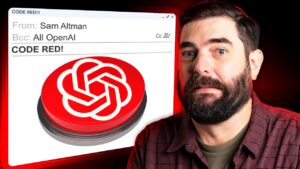“Email is almost 40 times better at acquiring new customers than Facebook and Twitter. But only if you send the right emails, to the right people, at the right time. There are countless ways to write copy that converts, but only one way to do it consistently: by using a framework.”
Interesting article regarding: The L.O.V.E. 4-Step Email Copywriting Framework: Connections, Trust & Conversion by Stephanie Nivinskus that I found on the DigitalMarketer.com blog.
*Caveat: All images, videos, audios & content are the property of their respective owners/authors. If they fail to appear because they have been moved or removed, you can here.

The Power of a Copywriting Framework
Before we introduce you to one of our favorite frameworks, let’s unpack why you should use a framework to begin with.
Copywriting frameworks provide a structure to organize your ideas while ensuring you don’t mistakenly neglect any key points needed to achieve your goals. They’re simple to use, easy to remember, and most importantly, they drive results.
But not all copywriting frameworks are created equal. Some pack more punch than others. Let’s look at why:
Neuroscience teaches us purchasing decisions are strongly influenced by emotions, but it doesn’t stop there. The written word (and that includes email) has the power to make neurochemical connections in the brain that inspire brand loyalty…for life.
The L.O.V.E. email copywriting framework is designed to create emotional connections and build the trust needed to convert your prospects into buyers. Here’s a breakdown of how it works:
The L.O.V.E. Email Copywriting Framework
L is for “Leverage”
In the typical sense of the word, leverage means to take something (maybe even the simplest thing) and use it to maximum advantage. Does this principle apply to email copywriting? You bet. You only have one chance to make a great first impression. To do it well:
Remind readers why they’re receiving your email in the first place.
Be mindful of how your reader first learned about your brand. Whether they opted-in to your list in-store, through a lead magnet, or because they made a purchase, make sure your first email reminds them that they asked you to send them something.
Follow-through shows you pay attention and that your brand values integrity.
Capitalize on your existing authority & build trust.
People have a million things on their mind. You have to convince them that out of the many voices competing for their attention, yours is the one they can trust.
Adam Waytz, an Associate Professor of Management and Organizations at the Kellogg School of Management, suggests trust is built when you demonstrate benevolence, integrity, competence and predictability.
What does this mean in actual practice?
Let’s start with an example of what not to do:
“Dear Susie,
My name is John. I am the owner of The Luxury Cars Company. We have sold thousands of cars to people just like you!”
This email doesn’t incorporate any of the trust factors we mentioned above. In fact, it may even come across as arrogant and disengenuous. That’s definitely not what we’re going for!
What about this?
“Dear Susie,
My name is John and I am the owner of The Luxury Cars Company. We take pride in having helped countless people like yourself find their dream car.”
Better. But still not quite hitting the mark. Because there are umpteen other luxury car dealerships that say the same thing. What’s so special about this one?
So let’s try this again:
“Dear Susie,
According to studies, 56% of luxury car owners feel happier overall with their lives. That’s why clients of The Luxury Cars Company will be the first to tell you, we don’t sell cars, we sell happiness. We’ve helped over 10,000+ people find happiness behind the wheel since we opened our doors 10 years ago.
While there’s still plenty of room for improvement here, we’re getting a lot closer to the finish line because:
- The writer seems benevolent (they want people to be happy–and the fact that their customers are saying they are happy after shopping with them adds a touch of implied integrity).
- The statistic is interesting because it speaks to the reader’s desire–and demonstrates success (competence!).
- The fact that over 10,000 customers have been helped suggests a sense of predictability. If they did it for them, they can do it for you, too!
Find common ground.
You must understand what matters to your readers in order to write copy that resonates with them. You may need to conduct market research, analyze customer feedback, or gather data on their demographics and behavior. By doing so, you can identify trends, patterns, and commonalities among your customers, which can help you create more targeted messages.
Want to take it a step further? Personalize your message. Even the tiniest things, like adding “Hi Susie” to the beginning of your email, can increase engagement exponentially.
Speak to their pain point.
You have to tread carefully with this one, lest you delve into the not-so-recommended territory of fear-mongering. In order to offer up your solution, you have to first communicate why the reader needs that solution.
There are many ways to do this. One of the best ways is to let someone else deliver the bad news. You can do this easily by sharing an interesting fact or statistic from a reputable source.
You’ve seen this a million times. Insurance companies use statistics related to accidents, disasters, or health issues to encourage consumers to purchase insurance policies. Security companies may use crime statistics or statistics related to home invasions to encourage consumers to purchase security systems. And the list goes on and on.
What statistics can you use that might inform your reader about something they might not have even been aware of–and how your product or service can solve that problem?
O is for “Offer”
Now that you’ve captured attention and made a connection with your reader, you need to clearly communicate why your prospect should buy the solution you sell. There are many ways to do this, but here are a few we love:
- Emphasize the unique benefits that set your product/service apart from competitors.
- Share testimonials from satisfied customers who have benefited from your product or service.
- Illustrate how your product or service has positively impacted the lives of real people.
V is for “Validate”
Now that you’ve captured your reader’s attention and shown them that your product/service will solve their problem, they’re ready to buy, right?
Wrong. Because objections are popping like popcorn in your reader’s mind. Right now, they’re thinking: But wait! What about… [fill in the blank with an objection your reader might have.]
Today, customers are more skeptical than ever. Between bots trying to sell them cryptocurrency on Tinder and Instagram ads sucking them into buy products they never actually receive, people are pretty darn afraid of getting burned.
To help them overcome their objections, consider what may be causing them to hesitate, empathize with them, and then address their objections head-on.
Here are a few ways to do this:
- Respond to the concern in a way that makes the reader feel heard and understood. Use clear and concise language. Relate to the reader. And be honest.
- Display social proof, such as the number of followers or subscribers on social media, positive reviews on review sites, or the number of happy customers.
- If price is a concern, offer discounts, financing options, or alternative pricing plans that fit within the customer’s budget.
- Offer a satisfaction guarantee or free trial period to help customers feel more confident in their purchase.
- Provide evidence of your company’s credentials, certifications, or awards, and share any media coverage or industry recognition.
E is for “Ease”
It might seem ludicrous at this point to think your reader is still sitting on the fence when you’ve given them so many reasons to get off, but humans can be interesting creatures. We tend to fear commitment. This is why your call to action needs to speak to those who are ready to click “Buy Now” – and to those who aren’t.
Here are a few ways to make it easy for your readers to take action:
- Test different CTAs: “Learn more” or “Try it out” are great CTAs, as they invite the reader to explore and learn more about your product or service without committing to a purchase.
- Good old-fashioned FOMO: By adding a time limitation or limited offer to your service or product, you are more likely to inspire action.
- Include a transitional CTA: If your reader isn’t ready to take the desired action, give them another option.
Think of your CTA as asking someone on a date. Don’t be demanding. Be enticing and inviting.
Wrapping It All Up
Once you’ve nailed the L.O.V.E. copywriting framework in an email sequence, you’ll want to tie it all together by writing absolutely unforgettable subject lines for each email. Remember, 33% of people open email based on the subject line alone. It would be a tragedy to invest the time in developing an awesome email marketing sequence like this only to find that noone actually reads it.
Here are a few tips to help you create email subject lines that work:
- Keep it under nine words if possible. People have short attention spans.
- Make sure it touches on a pain point.
- Make it weird–weird subject lines inspire curiosity and clicks.
Check this out if you want 8 more points to make effective email marketing subject lines quick and easy.
By integrating the proven L.O.V.E. email copywriting framework into your marketing tactics, you can create an automated system that deepens connections, builds trust, and converts prospects into buyers consistently and predictably. And that’s the whole point of this thing we call digital marketing!

What do you think? Share your thoughts in the comments below! If you would like to check the source or if the respective owners have moved here.
The L.O.V.E. 4-Step Email Copywriting Framework: Connections, Trust & Conversion
#DigitalMarketing #InternetMarketing #JVFocus


